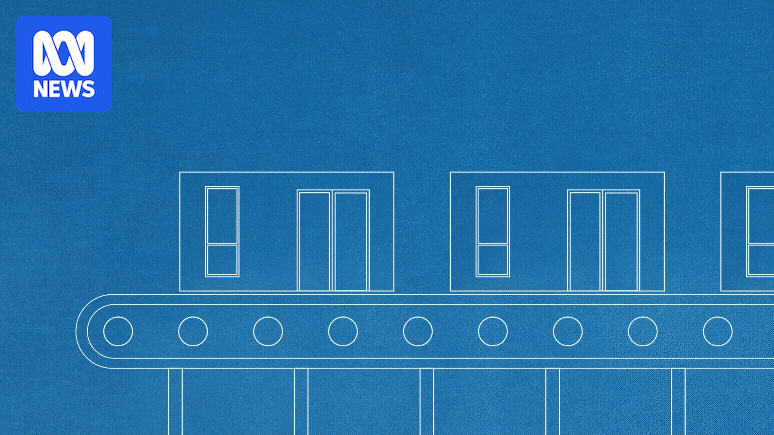
From the early days of colonial settlement to the post-war construction boom, prefabricated housing has played a significant role in Australia’s architectural history. As the nation grapples with a housing shortage and the escalating impacts of climate change, could factory-built homes offer a viable solution?
The term “donga” is quintessentially Australian, often used to describe makeshift shelters or portable prefabricated structures. While its origins remain unclear, the word is commonly associated with temporary accommodations in industries like mining and construction. For many Australians, especially those who attended state schools in the latter half of the 20th century, prefab structures are reminiscent of demountable classrooms.
This historical association has left a stigma on prefabricated and modular housing in Australia. Dr. Ehsan Noroozinejad from the University of Western Sydney notes, “We need to change the mindset within the community because the history of prefab in Australia is not very good. Most people think that the current generation of prefab and modular housing is very similar to the housing that they were using as temporary shelters in the 1950s, which were not very high-quality shelters.”
The Modern Prefab Movement
Despite their historical reputation, modern prefabricated buildings often surpass traditional constructions in quality. Yet, they account for less than 5% of new builds in Australia. As the country struggles to meet housing demands, governments are seeking ways to increase supply and affordability. The construction industry’s productivity has stagnated over the past three decades, while climate change continues to threaten homes with floods, fires, and cyclones.
Prefabricated and modular homes are increasingly seen as potential solutions to these dual crises. They offer the possibility of quickly and affordably building climate-resilient, energy-efficient homes. Damien Crough, co-founder of prefabAus, highlights the industry’s progress: “You’re seeing amazing, beautiful, architecturally designed [modular] homes that are being delivered all around the country now.”
Understanding Prefabrication
Prefabrication involves constructing building components, such as walls and roofs, in a factory before transporting them to their final destination. Modular construction takes this a step further, assembling entire buildings in a factory. As Dr. Ehsan explains, “Even the facade, even the plumbing, the wiring, everything will be manufactured and tested in the factory.”
Advanced manufacturing techniques, including robotic technology, AI, and digital twins, enhance the quality of prefab homes. “If you see a modular or prefab house from a street view, you cannot distinguish the difference between a traditional system and the modular system,” says Ehsan.
Global Inspirations and Local Challenges
Countries like Sweden and Japan have long embraced prefabrication, with Sweden building 85-90% of homes using this method. Australia, however, has struggled to achieve the necessary scale and volume. “It would be great to have factories like that in every state in Australia,” says Damien Crough. “But again, you need the demand and the volume.”
Historically, Australian governments have been significant contributors to housing stock. From 1945 to 1970, government builds accounted for 16% of residential constructions. Since the 1990s, this figure has fallen to just 3%, according to the Australia Institute.
Environmental and Economic Benefits
Prefabricated homes offer significant environmental advantages, reducing waste and carbon emissions. The construction and demolition sector is Australia’s largest waste contributor, sending around 27 million tonnes to landfill annually. Residential homes are also major contributors to greenhouse gas emissions.
“An average home built today will contribute 185 tonnes of CO2 equivalent during construction, compared to 24 tonnes of CO2 emitted over its lifetime.” — Green Building Council of Australia
Factory-built homes are more energy-efficient and generate less waste, according to researchers like Ehsan. “We can reduce the waste and we can do that near to zero,” he says.
Overcoming Barriers to Adoption
Despite their potential, prefab homes face several hurdles, including public perception, regulatory challenges, and financial barriers. Traditional on-site construction is entrenched in planning and finance systems, making it difficult for modular homes to compete.
Recent developments, such as a new contract for buying modular homes and changes in lending policies by the Commonwealth Bank, aim to address these issues. However, scale and volume remain critical challenges. “Modular is usually a little bit more expensive, but much faster,” says Matt Dingle, founder of a Geelong-based modular startup.
Innovative Solutions and Future Prospects
Innovations in prefab design are paving the way for climate-resilient homes. From bushfire-proof materials to amphibious cabins, the industry is exploring diverse solutions to meet Australia’s unique environmental challenges.
Associate Professor Lyrian Daniel from the University of Adelaide emphasizes the importance of climate-resilient housing: “The really big question is thinking about climate change and whether our housing is going to be suitably protective or adaptive to climate change in the future.”
As Australia aims to build 1.2 million homes by mid-2029, the potential of prefabricated housing remains significant. Projects like the one led by Matt Dingle and Deakin University could provide a blueprint for future modular communities, offering a sustainable and adaptable solution to the nation’s housing and climate challenges.







